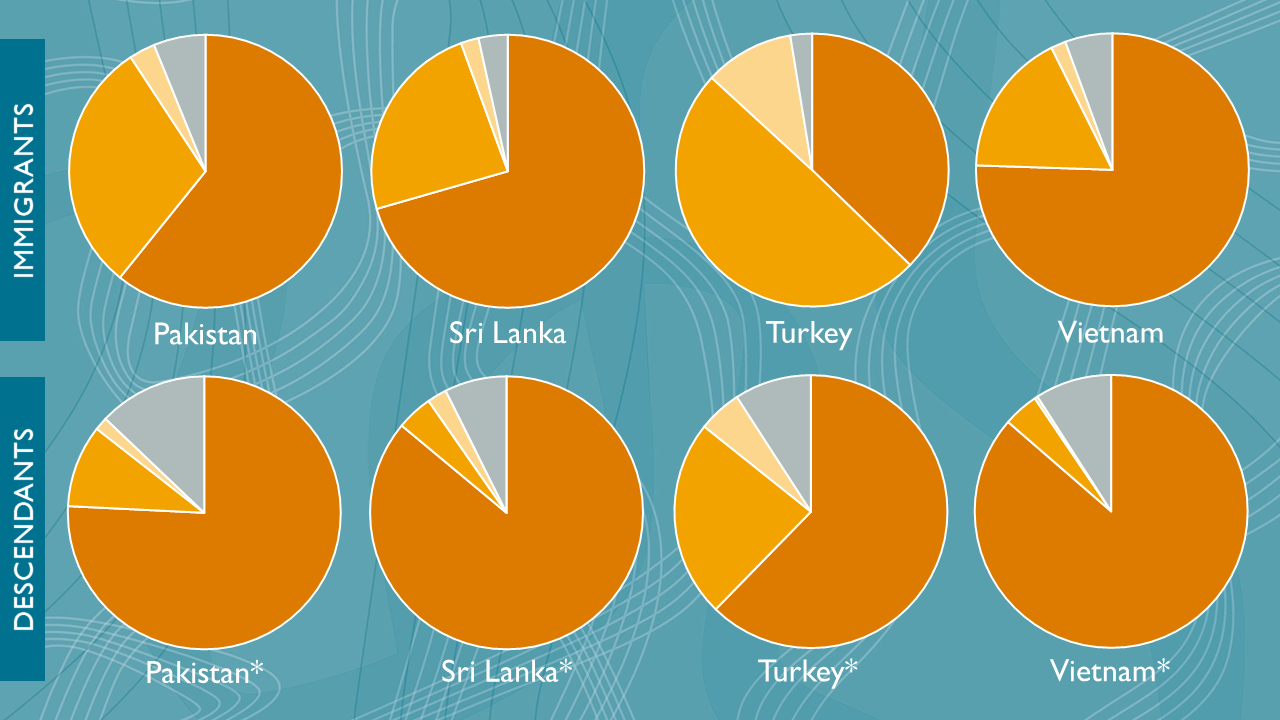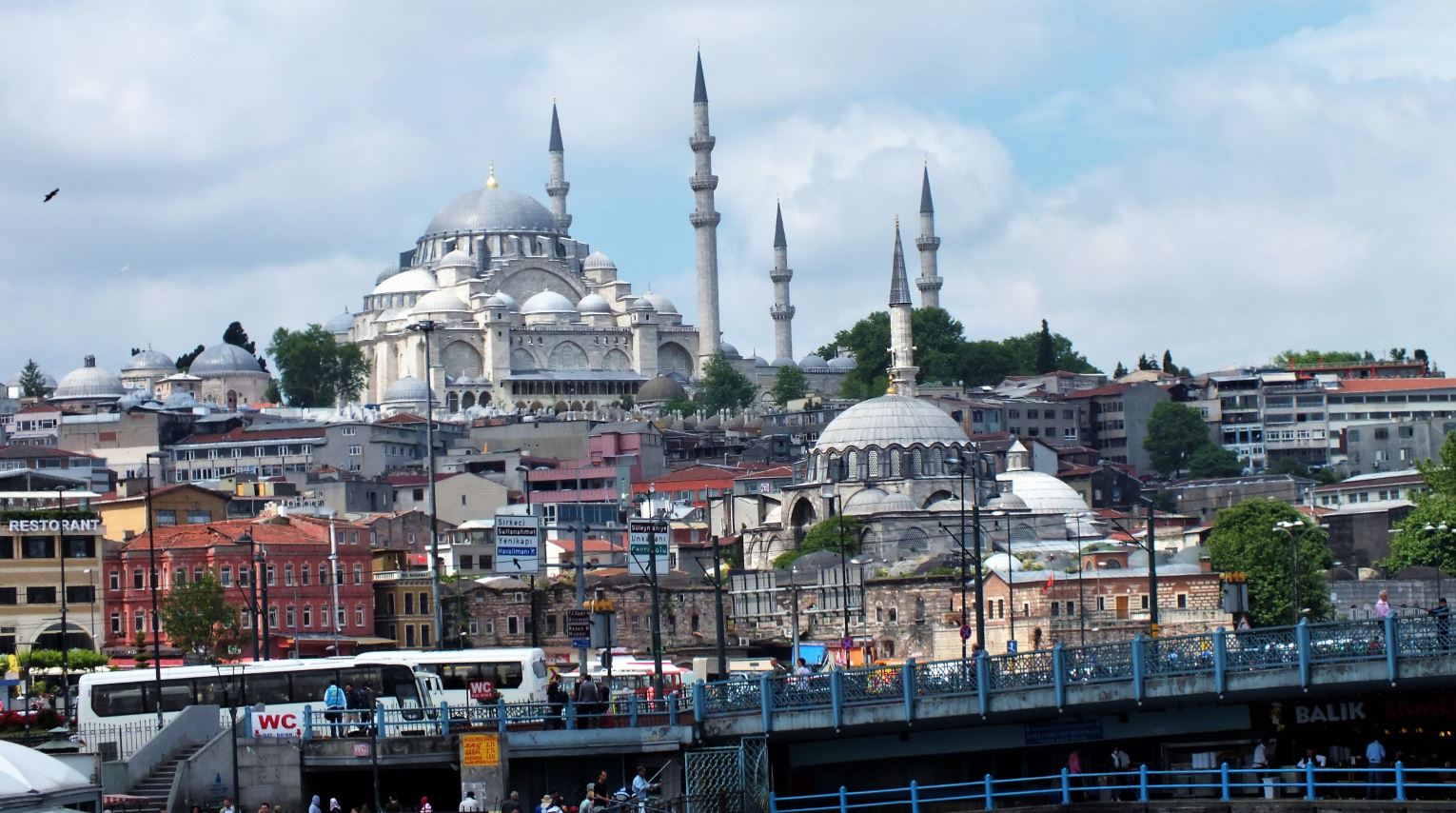Transnationality can be hard to define, since it covers groups of people that could change over time. Here are some of those who want to live in more than just one country:
- Migrants who want to stay in touch with their country of origin.
- Citizens of one country who want to spend parts of the year abroad.
- Couples who come from two different countries.
- Border commuters or people who run/are employed in companies that operate in several countries.
Seven researchers at the Peace Research Institute Oslo Prio, the University of Oslo and the Erasmus University Rotterdam have been involved in the project, including one scholarship student. An earlier, separate study looked at four different immigrant groups and their children. The same questions used in that study were used in a bigger study on living conditions for immigrants, carried out by Statistics Norway in 2016.
This showed big differences between different immigration groups in terms of whether they wanted to live transnationally. The four groups consisted of people from Pakistan, Turkey, Vietnam and Sri Lanka.
“The Turkish represented the group where most wanted to live in both countries. Nearly half of Turkish people living in Norway wanted this, and the number was also relatively high among the children who were born in Norway,” says Jørgen Carling.

The charts show how many among four immigrant groups who wanted to live only in Norway (dark orange), in both countries (light orange), those who wanted to move back to their country of origin (yellow) and those who wanted to move to a third country (grey). The top charts represent parents and the bottom charts their children.
Norwegian citizens who said they wanted to spend parts of the year abroad listed health as the most important reason.
The researchers interviewed 101 people who lived transnationally, and also 39 bureaucrats at the Norwegian Labour and Welfare Administration NAV.
“The Norwegian welfare model was created to secure welfare for citizens who for the majority of the time live inside of the country’s borders. Parts of the values the model is based on are challenged when some people travel abroad and take with them benefits like unemployment payments, child benefits and pensions,” says Cathrine Talleraas, who has looked at how the bureaucrats experience dealing with transnationals.

According to her, welfare bureaucrats share the view that transnationality is a new norm which is emerging in all sectors of the population. People who live in more than one country find it difficult to obtain the correct information from authorities, however, since rules are complicated and vary from country to country.
NAV misinterpreted EEA rules
At the same time as the researchers presented their results, came the news that NAV had been misinterpreting EEA rules in this area for years. The rules say that a person from Norway can carry his or her benefits to a different EEA country as long as they are entitled to them. 2.400 people have been ordered to pay back large sums of money. In 36 cases, people have also been sentenced to prison, for up to eight months.
“This is a very serious issue where people have been unfairly prosecuted and in certain cases ordered to pay back large amounts of money to NAV. Several people were given prison terms or punished in other ways. I apologise to those who have been affected and to their families,” said the Minister for Labour and Social Inclusion, Anniken Hauglie.
She has promised an external investigation of what has happened, and will explain the case to parliament. For now, though, the NAV Director Sigrun Vågeng has the minister’s trust.
Hard to know how many
The Norwegian research group has spent several years working with transnationalism, yet they still struggle to find out just how many people this applies to.
“If you only look at how many people receive Norwegian welfare benefits abroad, we are talking less than 100,000 people. But this is probably only one part of all those who live transnationally.

“At the same time the term is being applied to those who really do want to live in two countries. There are groups of people who receive Norwegian support while they have no intention of returning to Norway,” says Jørgen Carling.
He believes the study will help widen our knowledge about migration.
“When you study what people do rather than what they are, it becomes easier to see similarities. And the phenomenon is on the increase,” he says.
Blurred lines
The internet, Facebook, Skype and other methods of communication makes it easier to maintain a presence in two countries. Bills can be paid digitally, friends and family can stay in touch and low-cost airlines makes it cheaper to travel.
“At the same time we see a blurring of the lines for who should and should not be part of the welfare state. Citizenship becomes less important,” says Grete Brochman, an Oslo University Professor who has led two major studies on migration in Norway.
Another factor which will impact on how many will chose to live transnationally is that Norway, as the last Nordic country, will allow dual citizenship from 1 January 2020.





